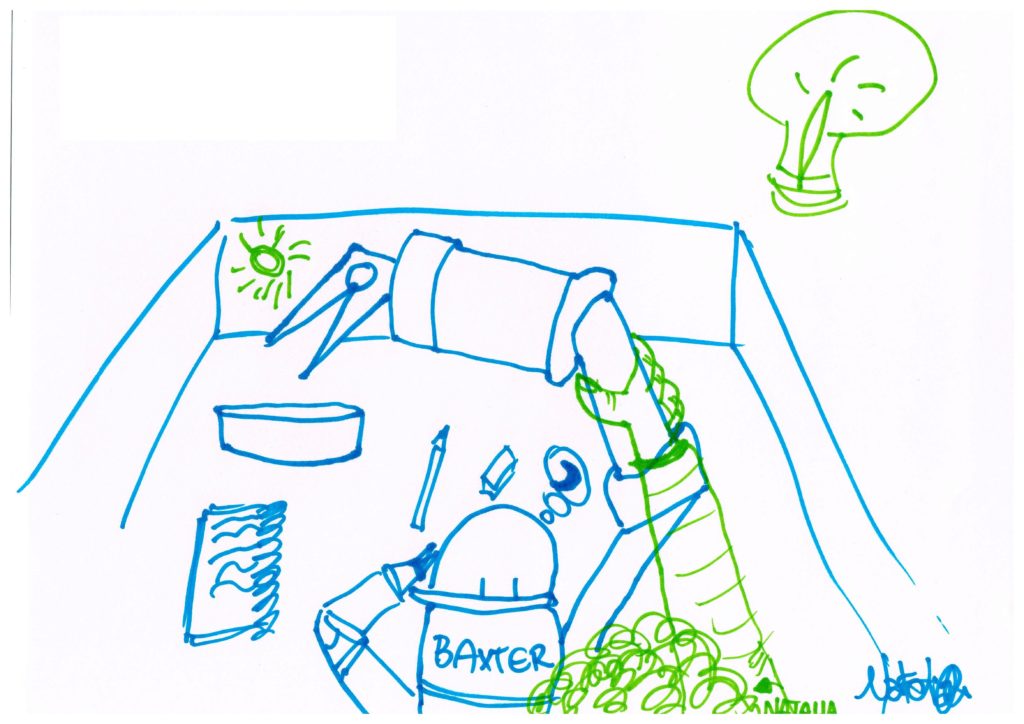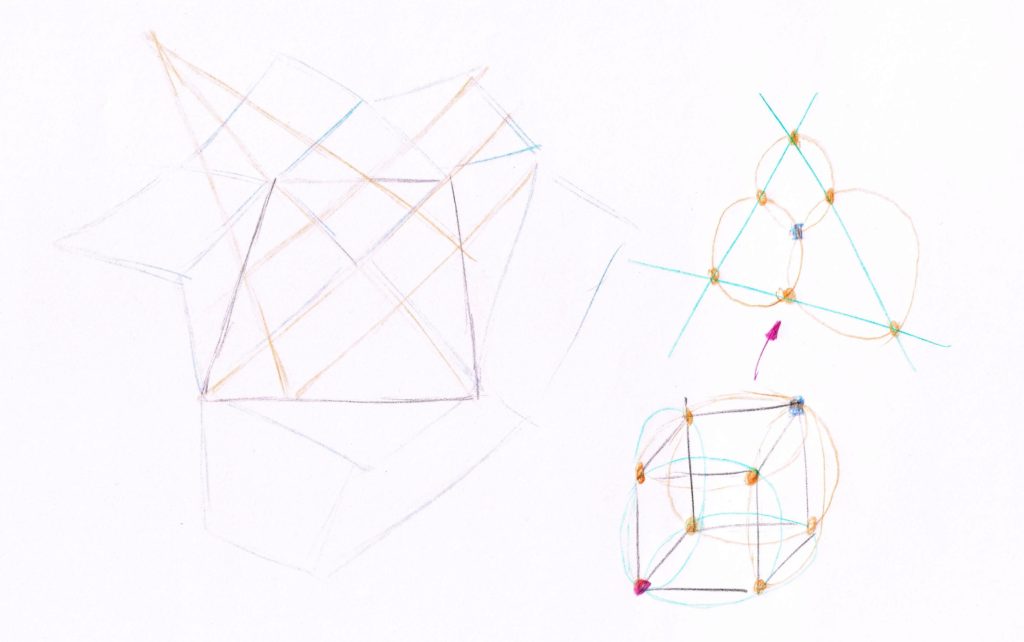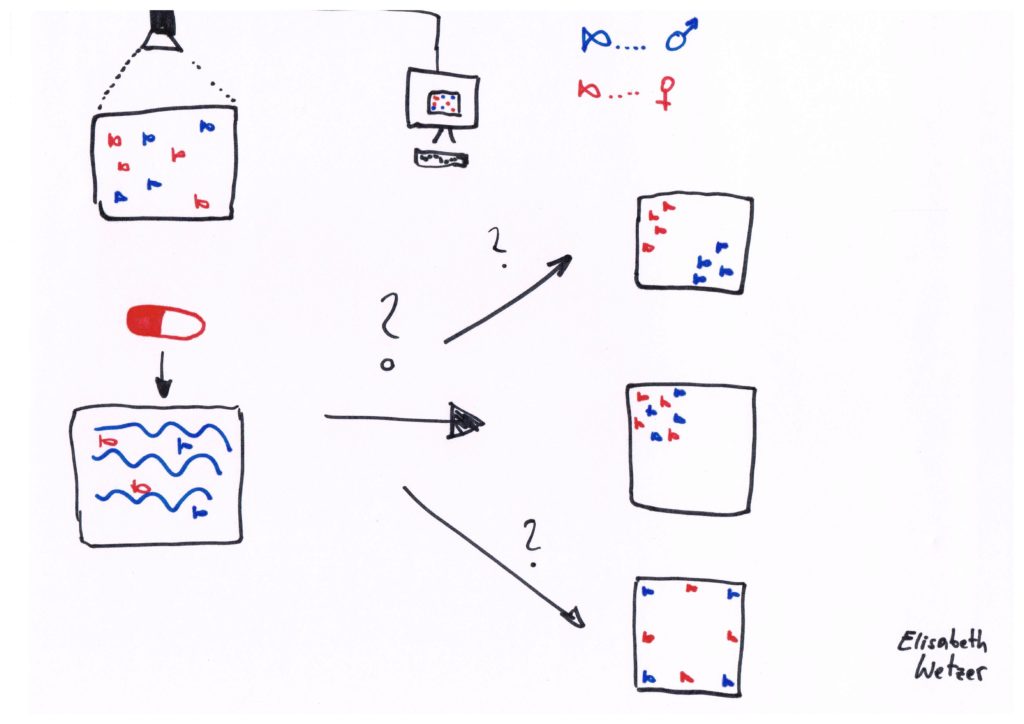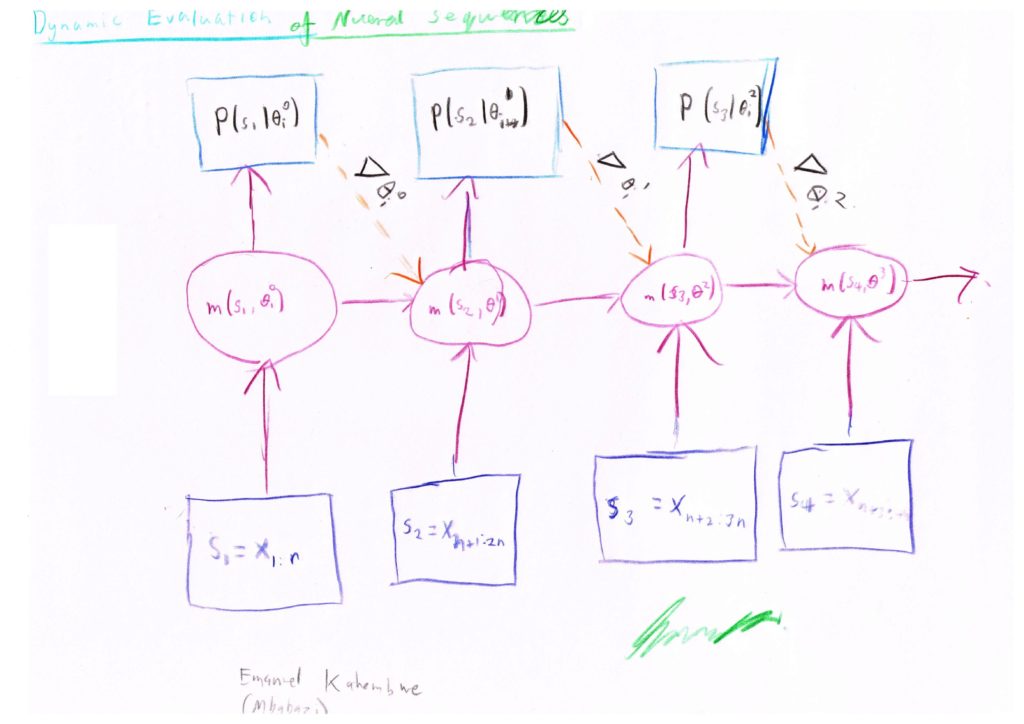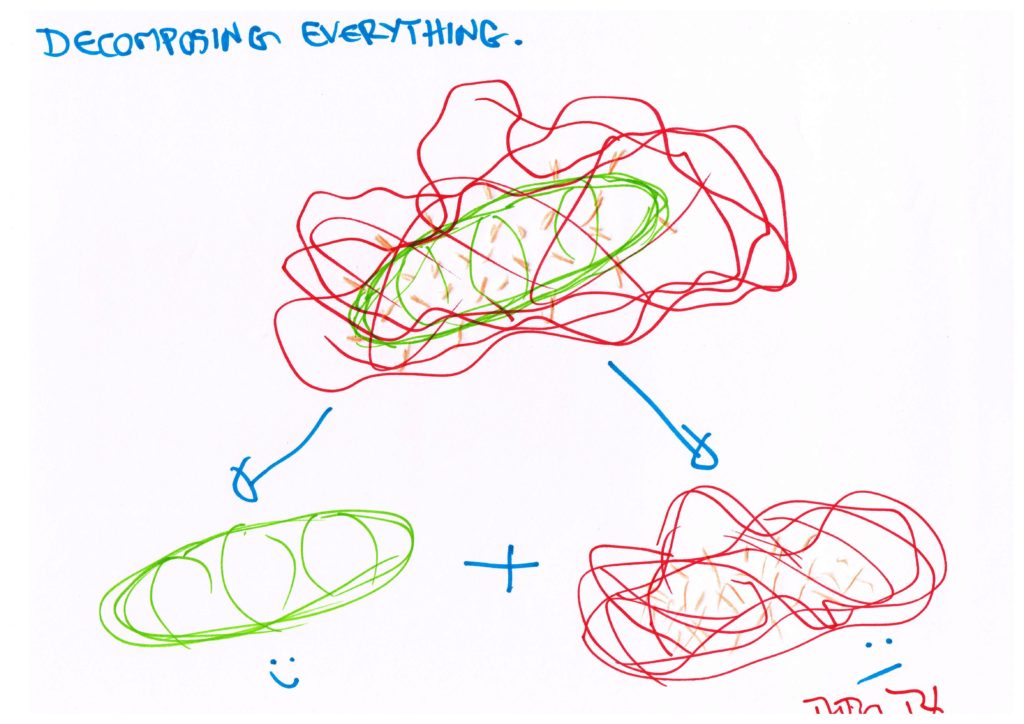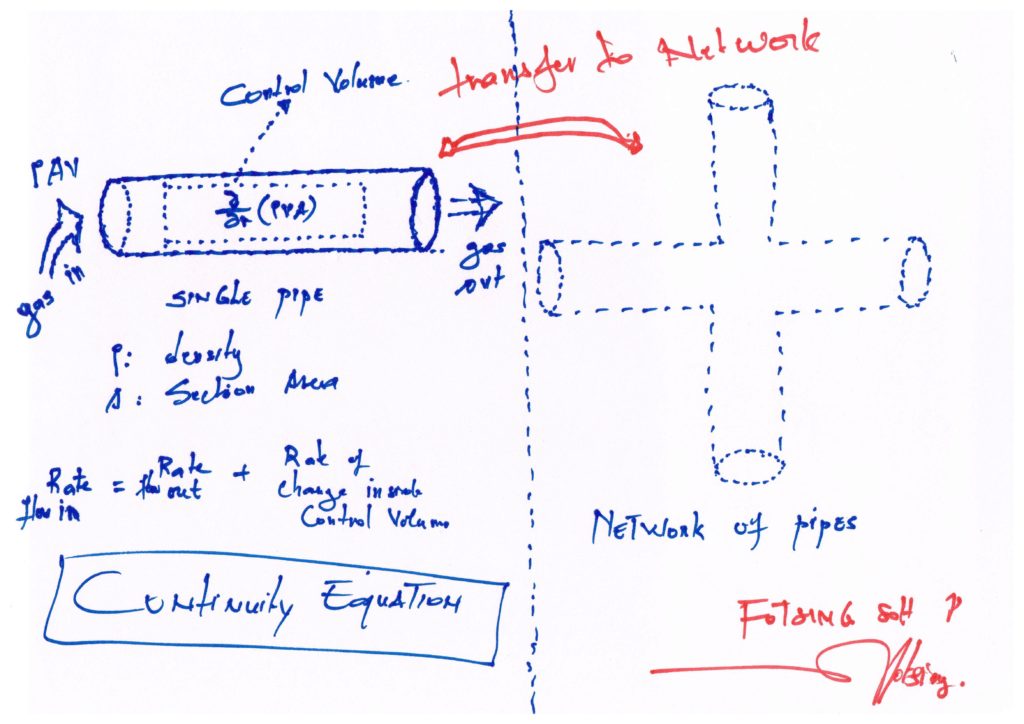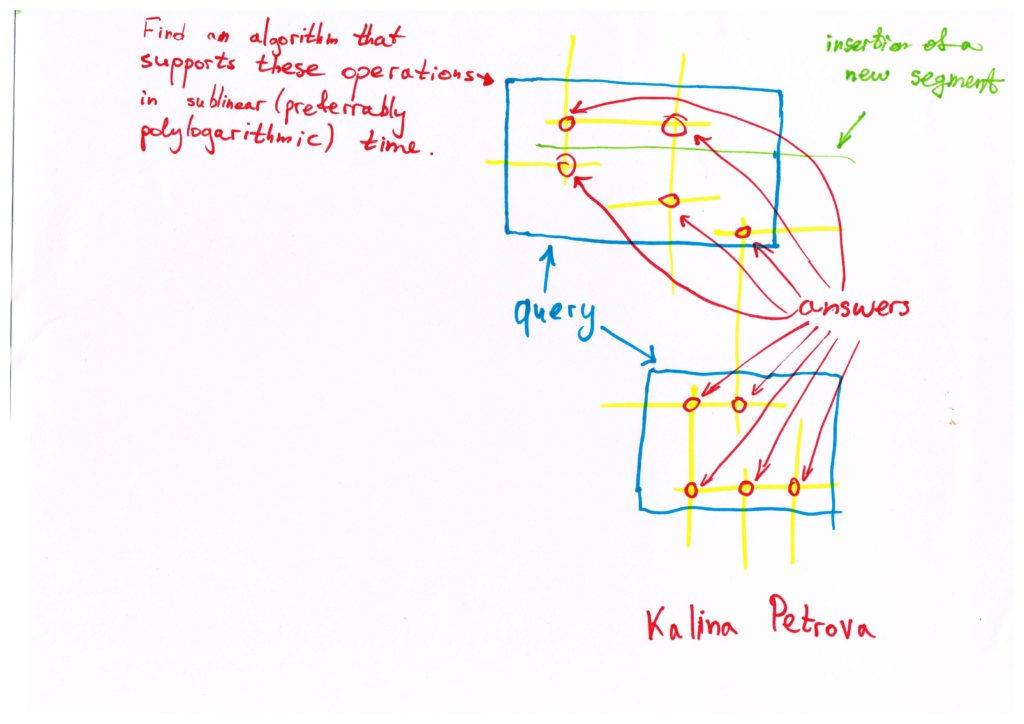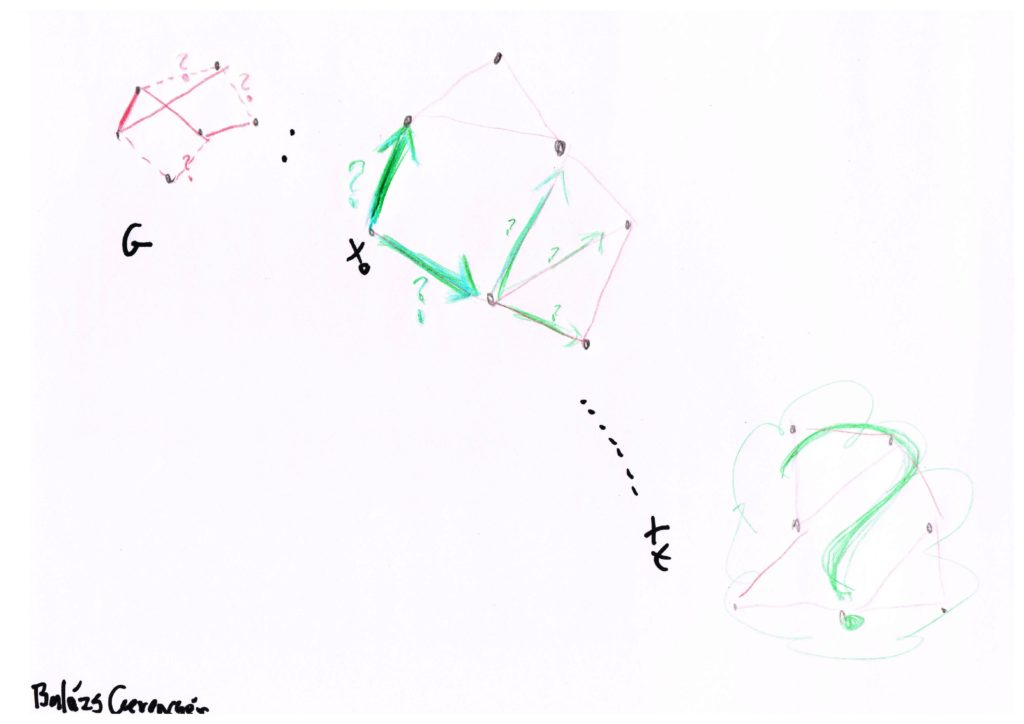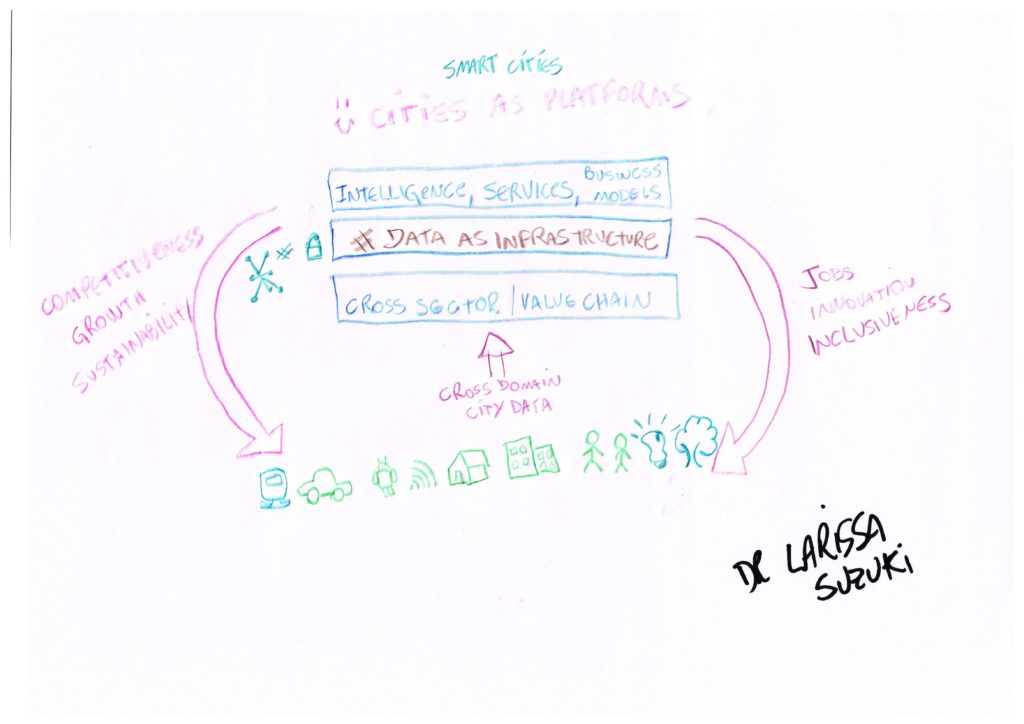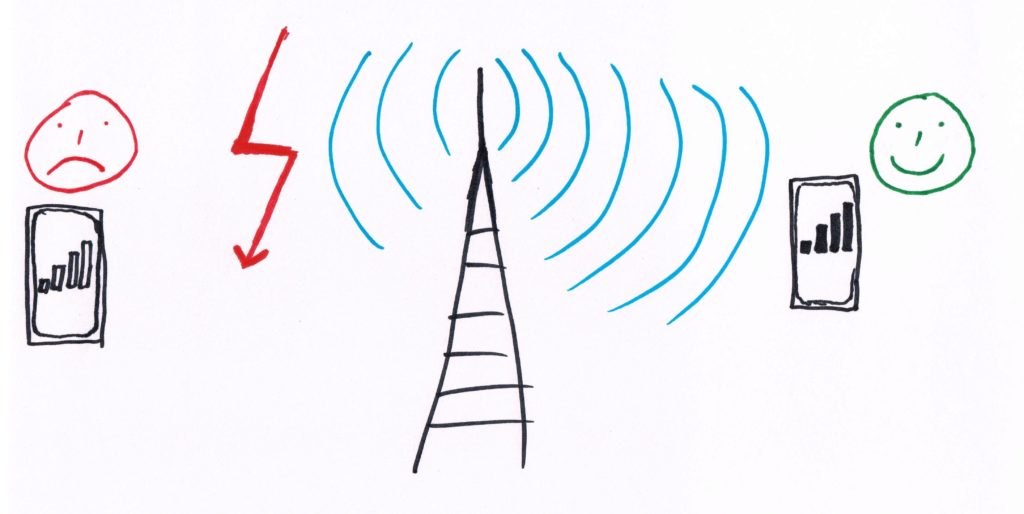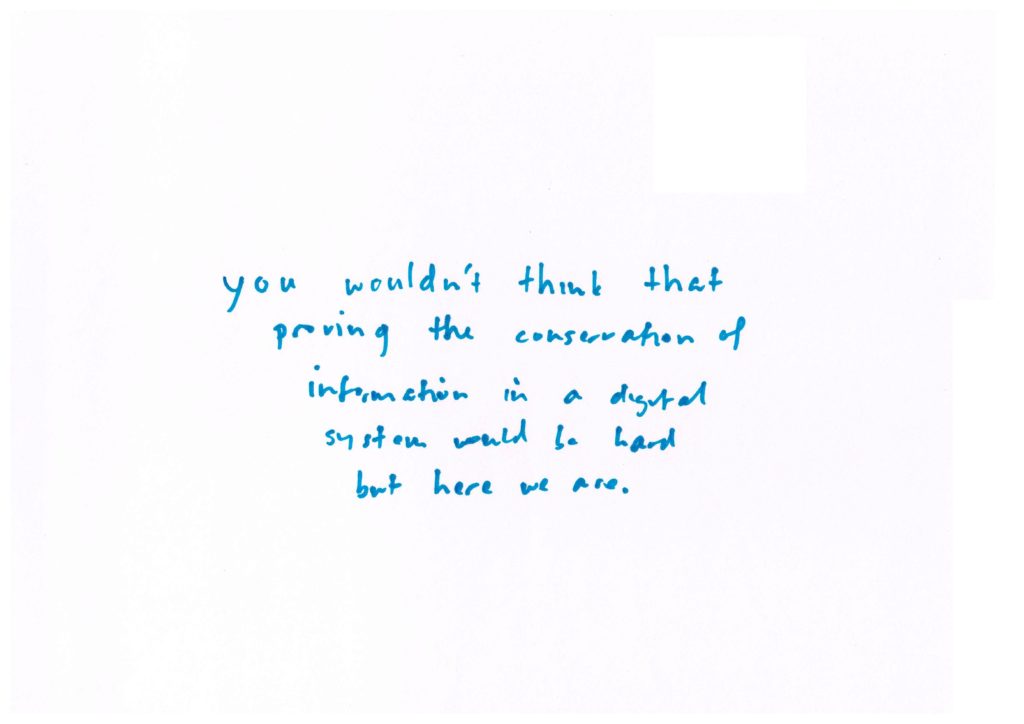If Your Research Were a One-Page Cartoon

The scene: 200 bright young researchers in mathematics and computer science have gathered in Heidelberg, Germany. They are here to share ideas, to discuss problems, to learn from honored laureates of their fields.
A bumbling blogger enters, with a handful of markers and a clownish smile.
BLOGGER: Hey, can you guys each draw me a picture of your research in a single page?
RESEARCHERS: Ha ha!
[pause]
RESEARCHERS: Oh… you’re serious.
And so, to oblige the fool, they draw pictures, explaining their ambitious theoretical work in terms that even his simple blog-brain can fathom. This is what they create:
Natalia Díaz Rodríguez, a computer scientist postdoc in France, shames my feeble artistry by drawing the robot that she’s training, via deep learning techniques, to hit a button:
At first, I think the project name – “Robots That Dream” – is an adorable joke. But it’s quite literal. The robots spend time after each learning session doing extra processing without new inputs – in other words, dreaming.
Tonight, I shall dream of robots – and perhaps they of me.
Next, Rodrigo Mendoza Smith, a postdoc in England, gives an elegant illustration of his current problem: determining the nature of a high-dimensional manifold by sampling just a small number of points.
It’s like learning about a whole planet through just a few photographs. 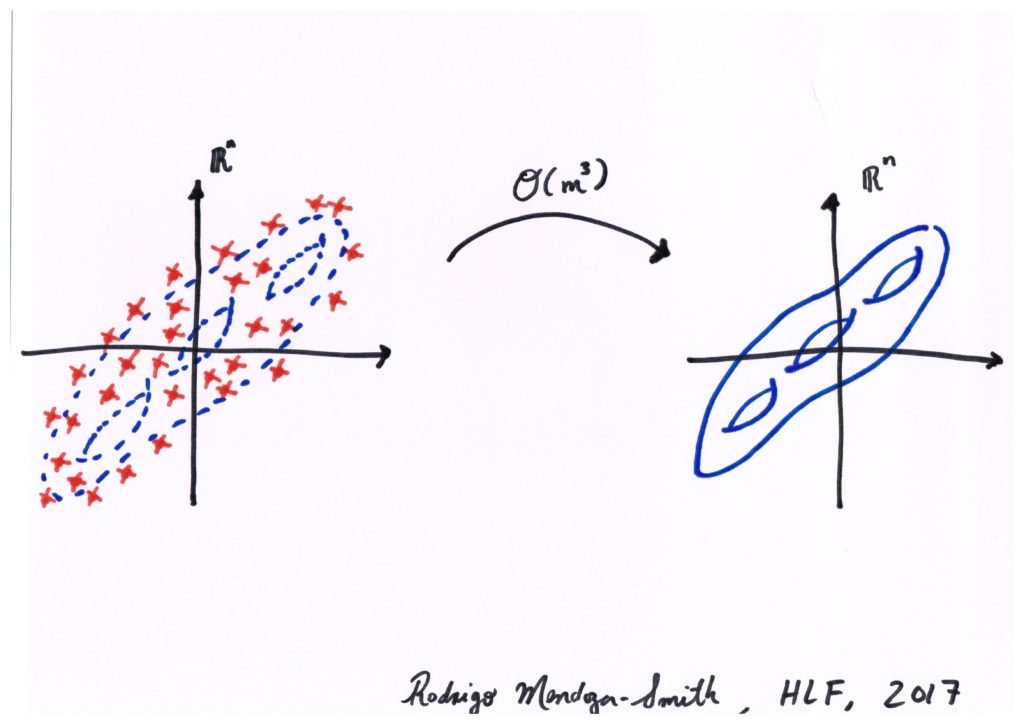
J.T., a math PhD student in Germany, supplies a delicate pencil diagram of a famous geometric result pertinent to his work in differential geometry.
I invite him to state the theorem on the page. He declines with a smile. “It will make people more curious this way.”
Elizabeth Wetzer, about to begin her computer science PhD in Austria, draws guppies. Yes: guppies. (Who said computer science was inaccessible?) In her master’s project, she introduced a (benign) drug into their system and tracked its influence on their social behavior.
(We’re running a very similar experiment here Heidelberg; just replace “guppies” with “postdocs” and “drugs” with “free ice cream.”)
Emmanuel Kahembwe, a computer science PhD student in Scotland, illustrates a hot-off-the-presses paper in the “dynamic evaluation of neural sequences.” The work shows how neural networks can adapt to recent inputs (much as a postdoc can adapt to the intrusive badgering of a blogger) while keeping their older learning as a baseline.
“The dotted arrows,” he explains, “are our contribution.” It’s fun to see a step of progress in research made corporeal, given a diagrammatic form. Maybe all progress is arrows.
Tamas Titkos, a math postdoc in Hungary, shows the power of mathematics to decompose a glorious mess into the “glorious” and the “mess.”
Pasquini Fotsing Soh, a math PhD student in Cameroon, gives meticulous testimony to the beauty of fluid dynamics, showing his field’s ambition of building up to the complex from the simple. (Well… the *relatively* simple. Fluid dynamics ain’t Sudoku.)
Kalina Petrova, a computer science master’s student in Bulgaria, offers a crisp and colorful illustration of work she did under the guidance of Turing laureate Robert Tarjan:
Balázs Gerencsér, a math postdoc in his native Hungary, gets stochastic on his page:
Larissa Suzuki, a Brazilian computer science postdoc in London, studies smart cities.
Pointing to the diagram, I ask if her work is to be part of the arrows. (I’m hung up on arrows.) “No,” she clarifies, pointing to the boxes hovering above the city, “I’m up here.”
With the intelligent use of data, she helps the elements of urban life blend into a more perfect whole.
Matthias Herlich, a German computer science postdoc in Salzburg, draws his area of wireless communication in elegant simplicity.
Good signal, happy. Bad signal, sad.
He has gone above and beyond: instead of just his research, he has captured the essence of life in the 21st century.
And finally, a poignant epigram from a computer science researcher whose name escaped me, because he fled before I could catch it:
Here we are, indeed.


